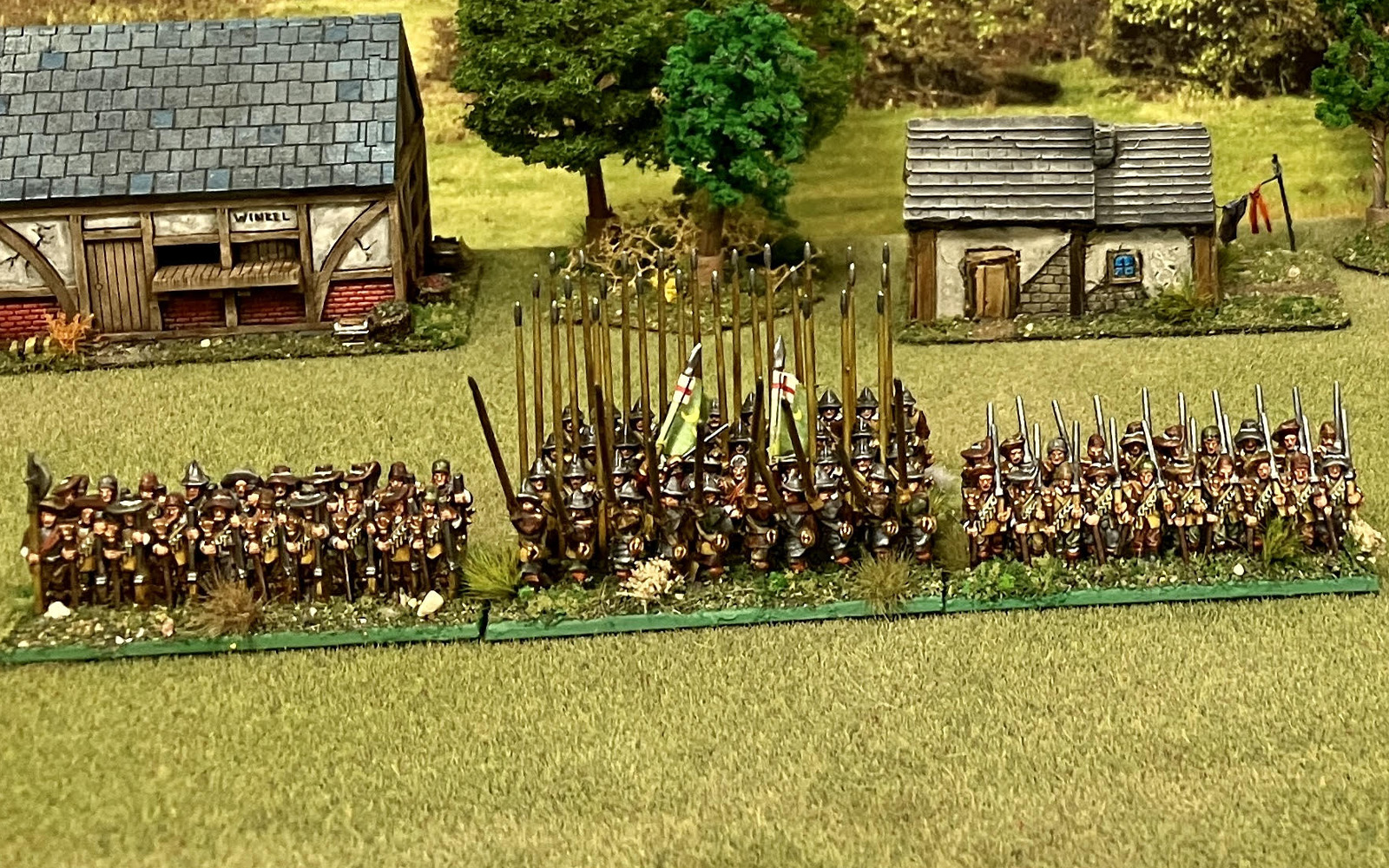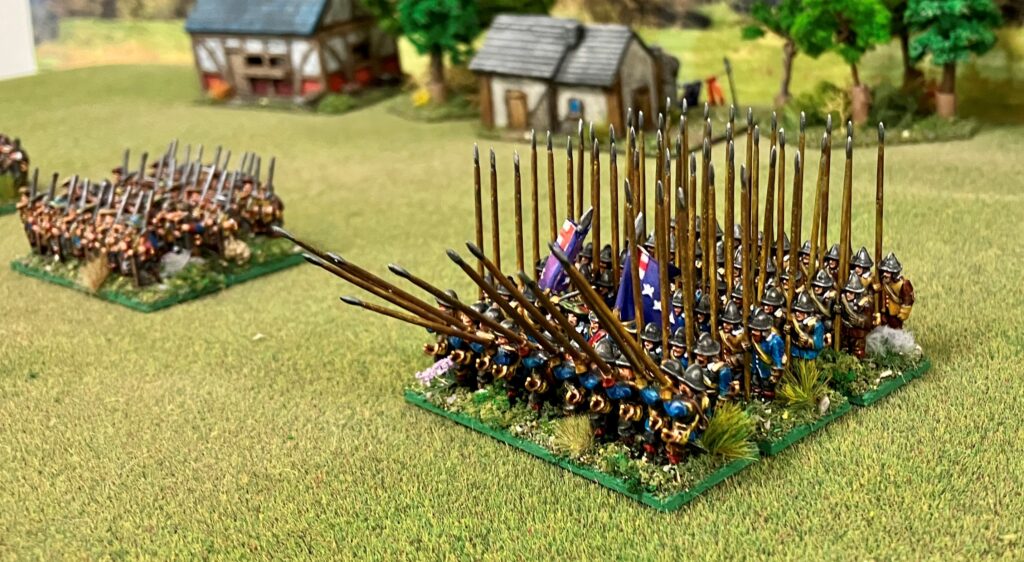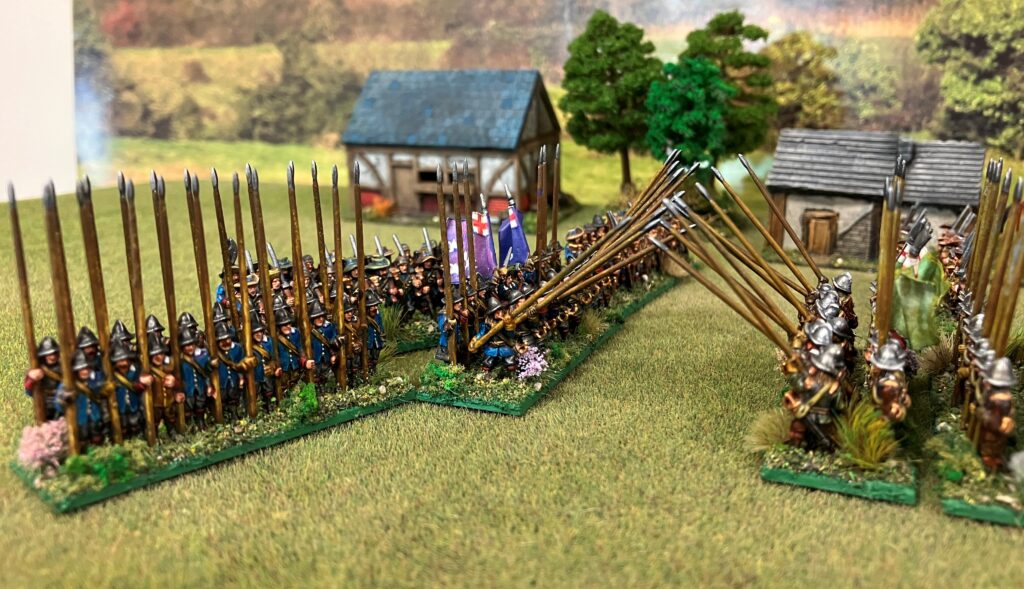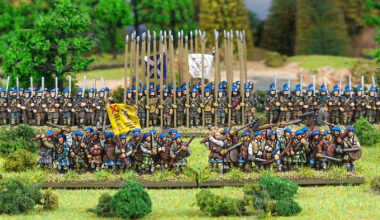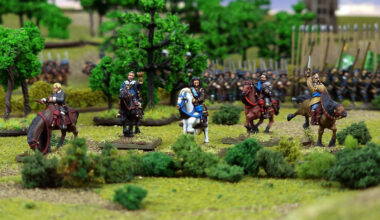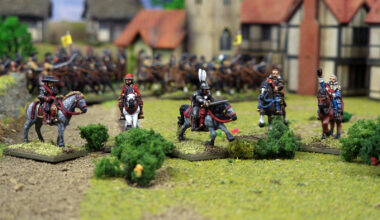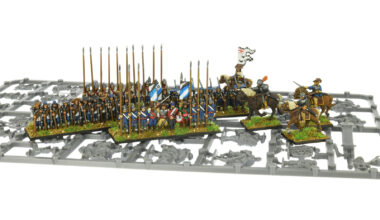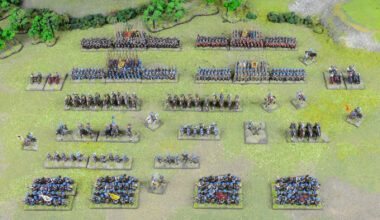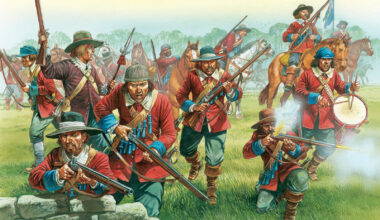Rhys Pogson Hughes Emanuel is a prolific and extremely active member of the Black Powder Epic Battles community. Some of you may recognise him from the lively Epic Battles Facebook movement where he has been supporting the game across the Epic Warlords, Warlords Epic Battles ACW, Epic Battles Warlord Games, Warlord Games Epic Battles and Warlord Games Epic Battles groups. Be sure to check out these groups and join the Epic Battles conversation.
Rhys: I have been extremely fortunate to get an early look at the new Pike & Shotte Epic Battles infantry sprues. What follows are my initial thoughts on the sprue itself, including its potential for kitbashing and converting as well as my impressions of the painting experience.
A small caveat or two; I bought both into the American Civil War and Waterloo Campaign ranges and was generally impressed by the overall concept and direction of these two ranges. Secondly, I will largely be talking about these Pike & Shotte miniatures from the perspective of the English Civil Wars (though these figures can also be used for the Thirty Years’ War, I am far less knowledgeable in this period). Finally, the potential of the sprue, in my opinion, is unlocked by having and combining multiples of sprue, though if you’re collecting, you’ll have plenty of these!
I’ll start, somewhat unconventionally, with the bottom line. These are good sprues – well thought out and balanced which show an evolution from the previous Epic Battles sprues. Why am I impressed with them in particular? It is not just the sculpt quality and sprue balance, as although I am fond of converting for variety and authenticity (see Rhys’ previous articles for a lot of this -ed.) – with these I think I am going to be out of business, they really don’t need it.
The Sprue
The detail is a good balance for ease of painting whilst maintaining historical accuracy, whilst the variety works both well for the period and to help painters create individuality within and between their units.
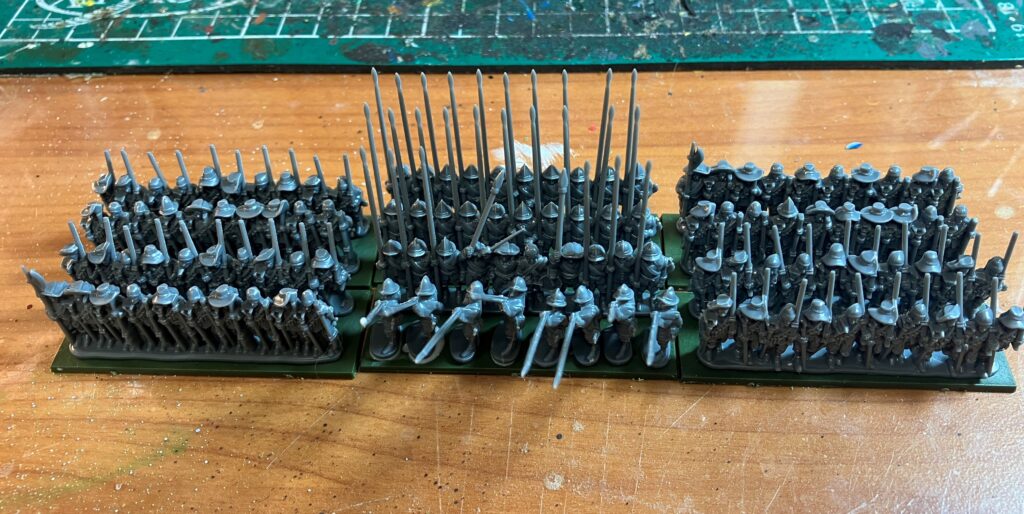
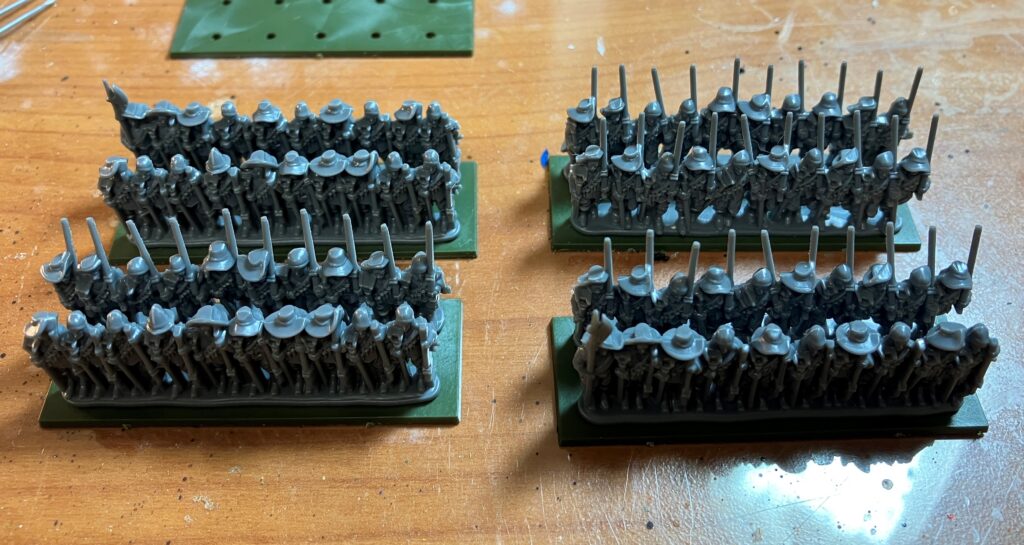
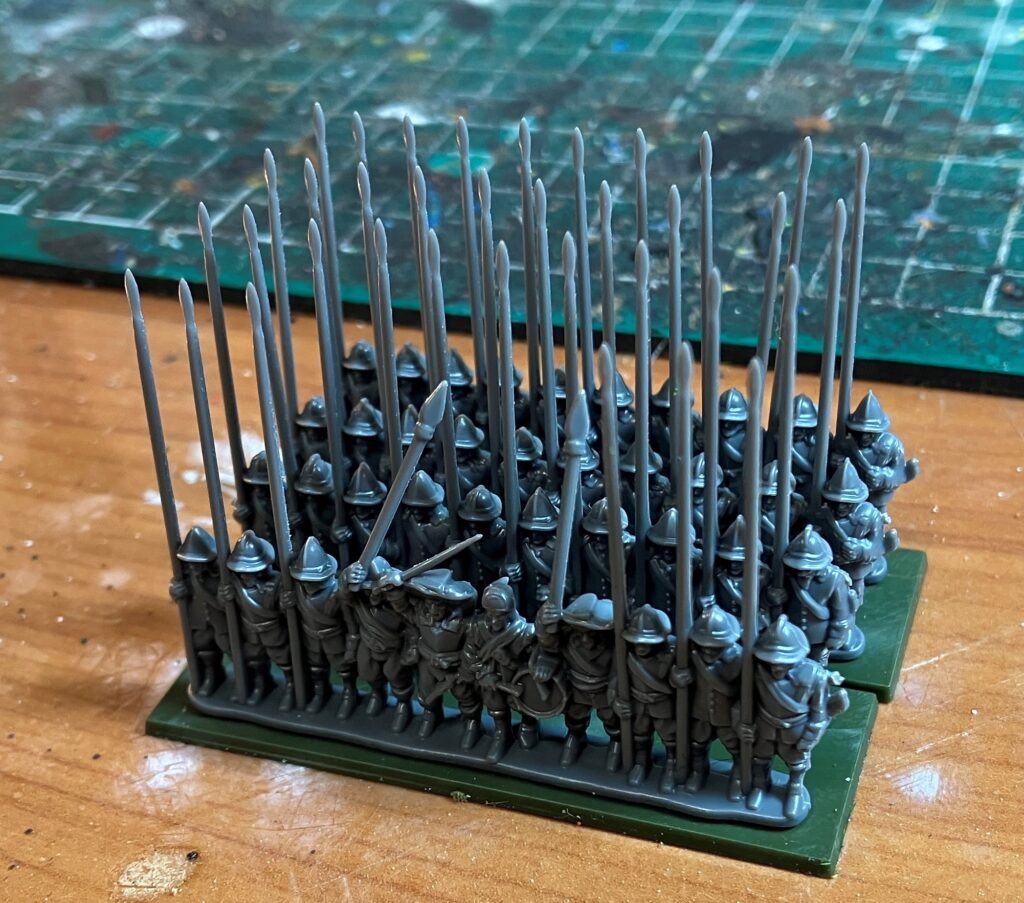
With the existing Epic Battles ranges, there could be benefits from splitting the strips in half. For the English Civil Wars, this is a possible consideration to represent the various pike-to-shot ratios observed over the course of the period (although not necessary for the Pike & Shotte game itself). But I would say, multiplying the infantry strips as they are on the sprue is a far better way of manipulating this representation – simply from aesthetic and tabletop footprint considerations.

This methodology also offers the obvious ability to show Spanish-style Tercios, which just looks awesome.
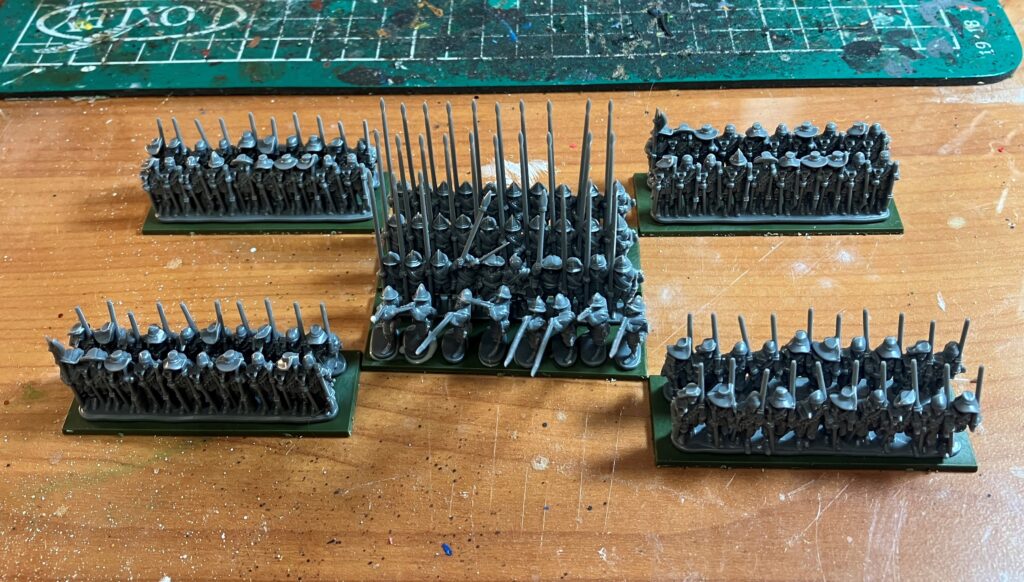
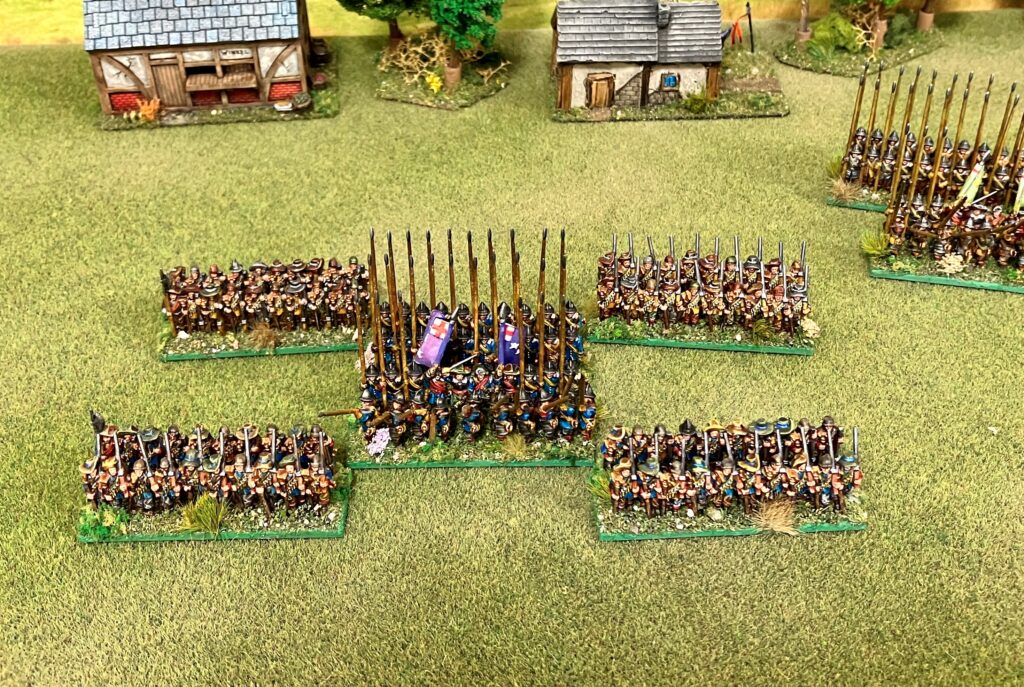
Although I have yet to see them in the flesh, the commanded shotte from the cavalry sprue will also offer the ability to add variation to the infantry Battalia front line. You could do similar with the Ensigns/banner bearers on the same sprue. A combination of these would provide a fine alternative command for a pike regiment. On the infantry sprue itself, the individual pikemen and the mix of unarmoured and armoured pike strips give plenty of scope for diversity; regiments could be double-ranked pike at the ready, all unarmoured, or all armoured, for a few examples.
Some may wish to have a more uniform headdress within a regiment (such as lobsterpot, Montero, Monmouth, puritan etc). This can be somewhat achieved by head swaps, moving all of one type to one strip and vice versa, though as you can see below this will be fiddly for the inexperienced and experienced alike. If you have any spare or leftover American Civil War infantry sprues, their wide brimmed hats will work for Pike & Shotte too, and the kepis can pass for Monteros with a little work.
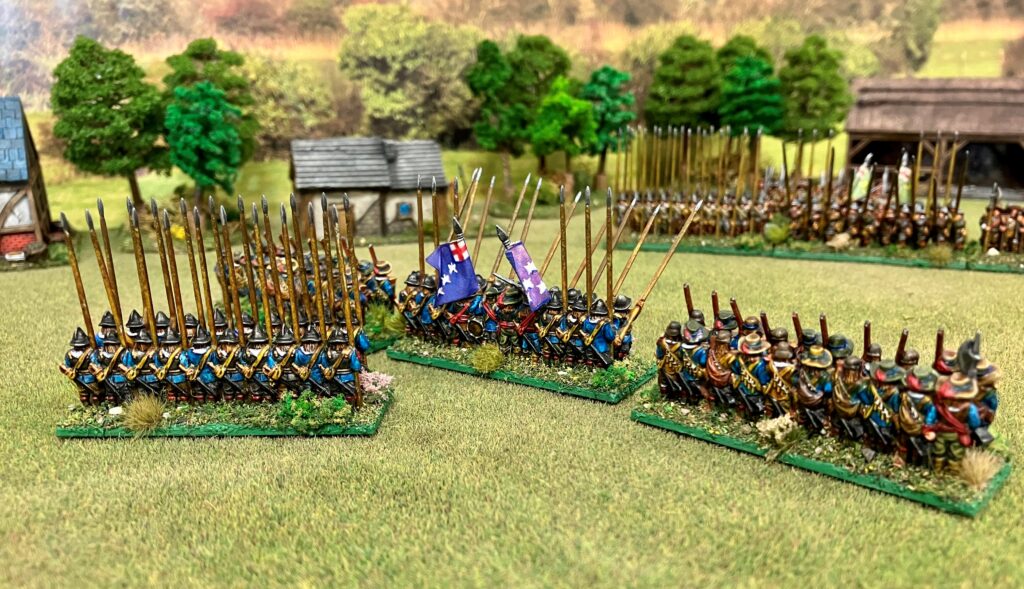
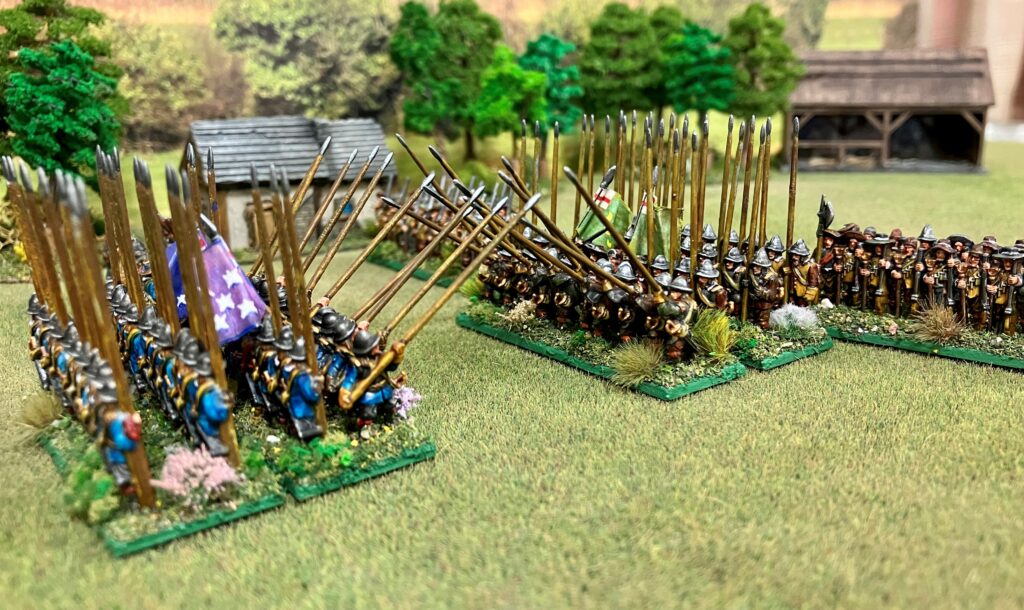
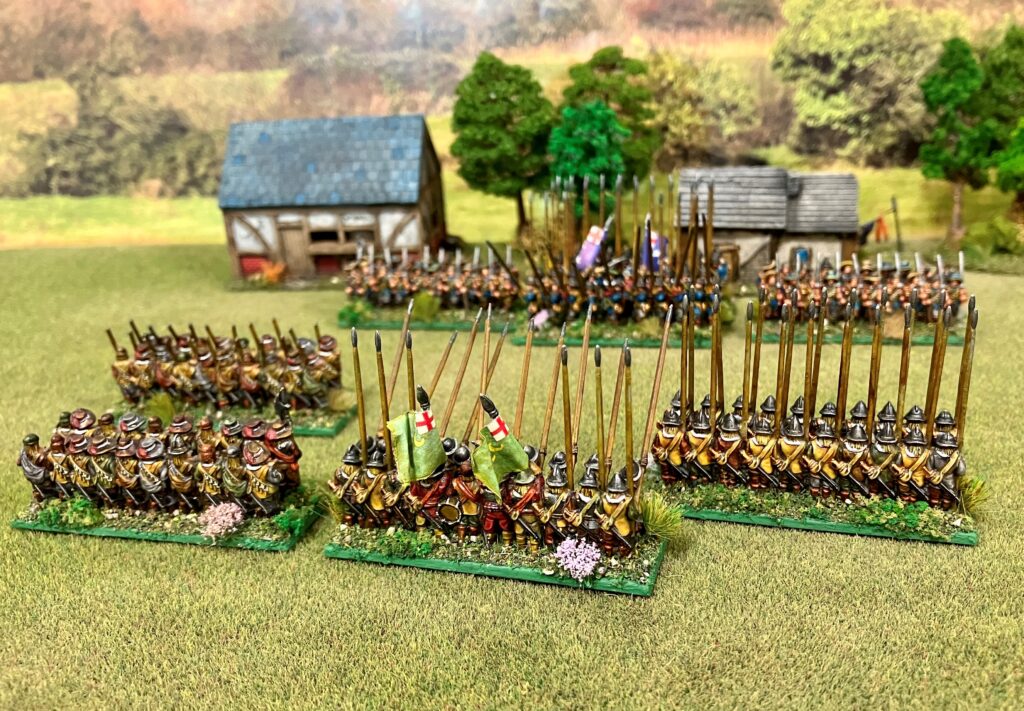
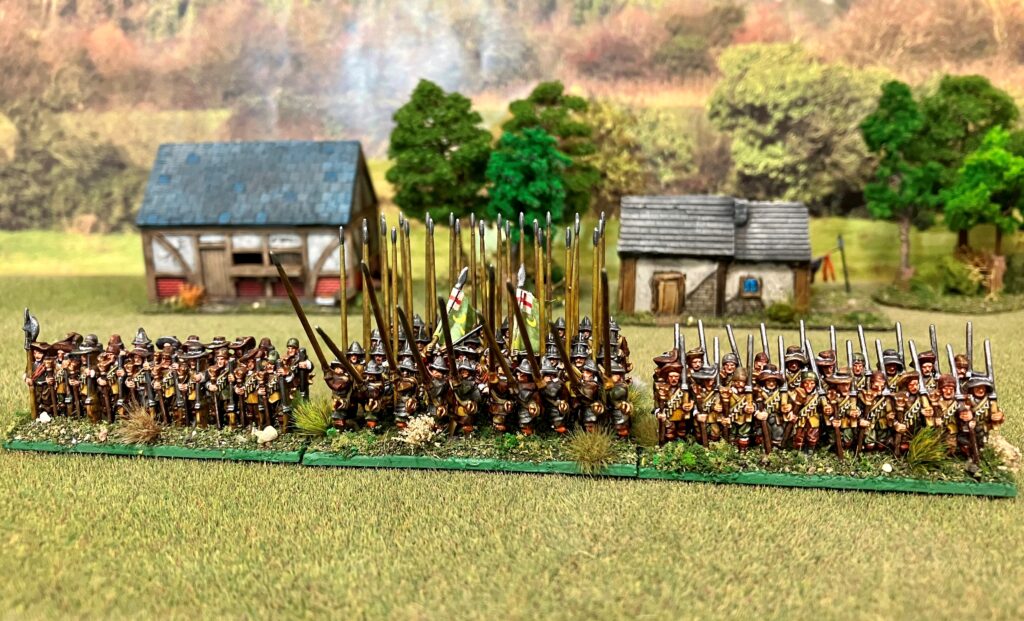
Painting
The level of raised detail on the miniatures lends itself nicely to one of the more prevalent methods used for the previous Epic Battles; namely: a dark undercoat, white highlights and a contrast/speed-paint/wash and finish. More traditional base coating, block painting and washing also takes well, but is considerably slower I found. For a comparison, a three stand Napoleonic unit would take me four of my evening sessions. Four stands Pike & Shotte infantry took me just over two sessions.
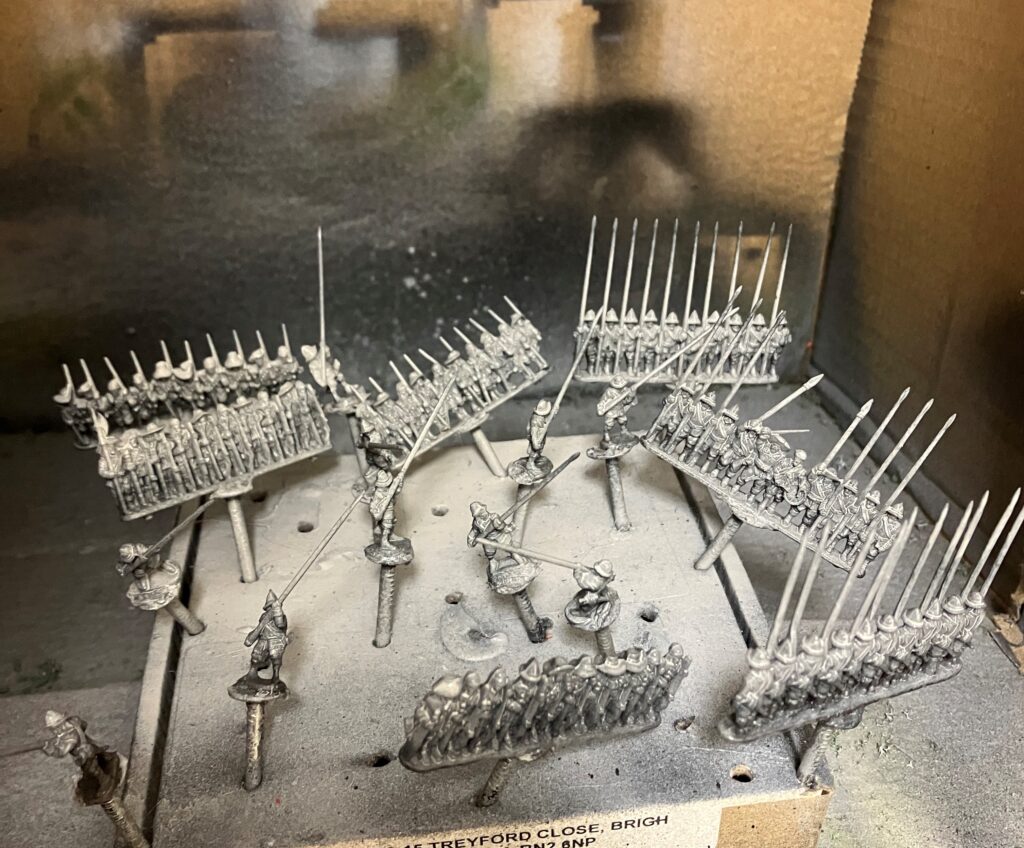

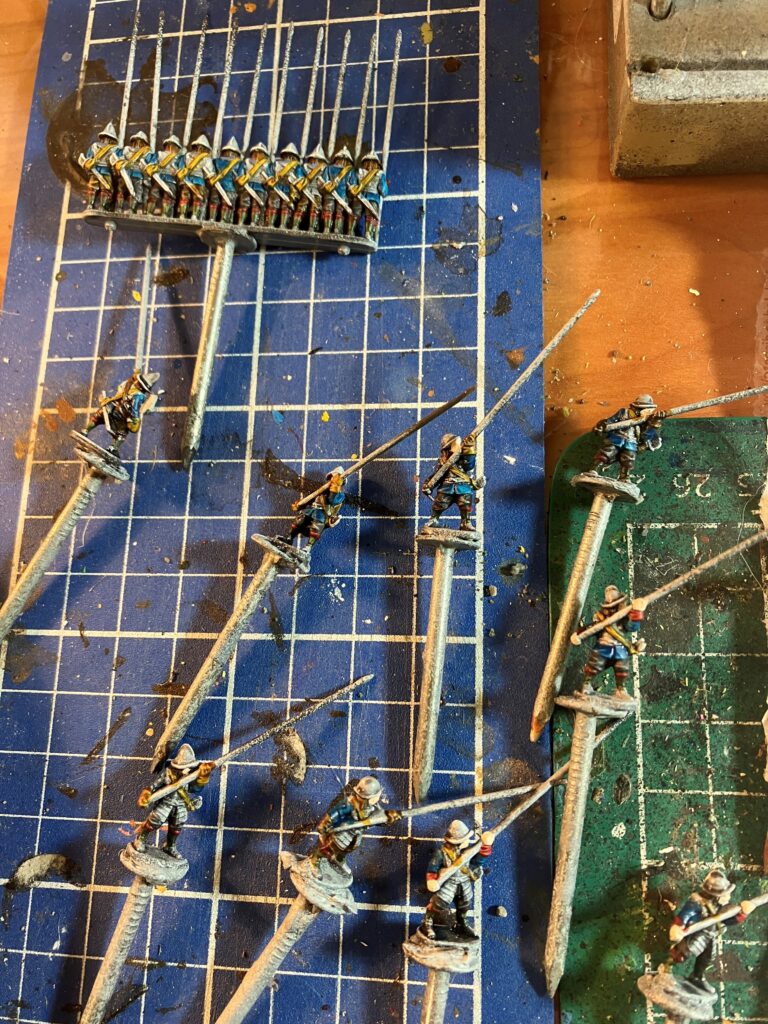
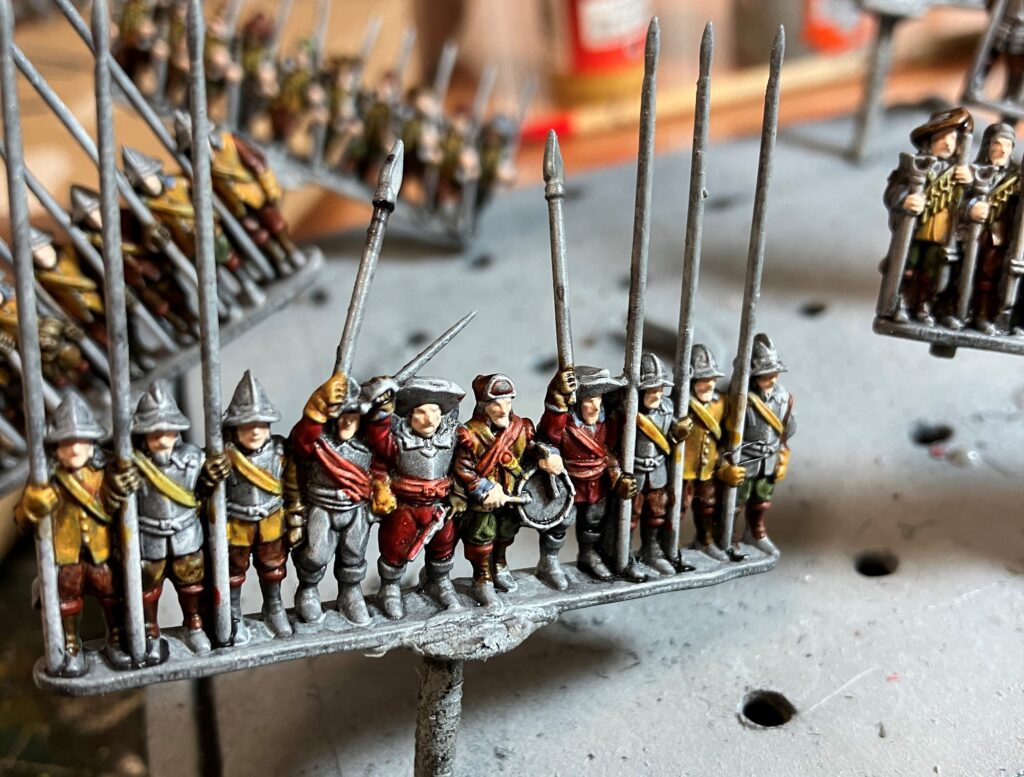

I painted one unit to look more rag-tag, choosing four primary colours and cycling through them. The other unit I chose a more uniform appearance to see how two approaches compared. I opted for a quite dark and grubby look as I felt this appropriate for the period. You could easily add another pass of highlights to lift the look and make them pop if you so wished.
I experimented with darker and lighter metallic finishes on the armour, hoping to represent polished, weathered and painted armours in the end. I also tested extensively to get the right combination to for that all important tawny colour, so prevalent in this period.
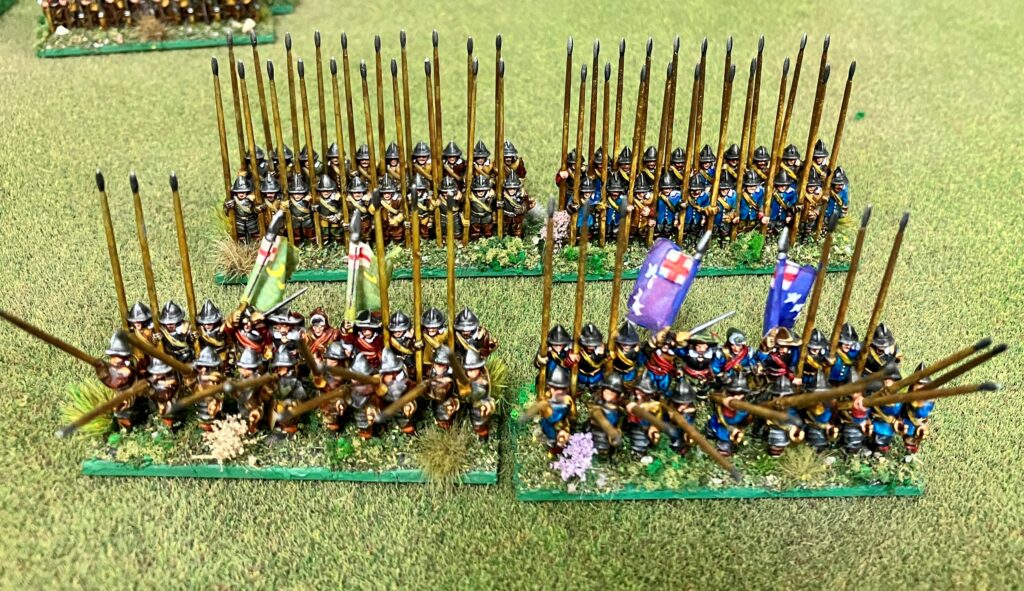
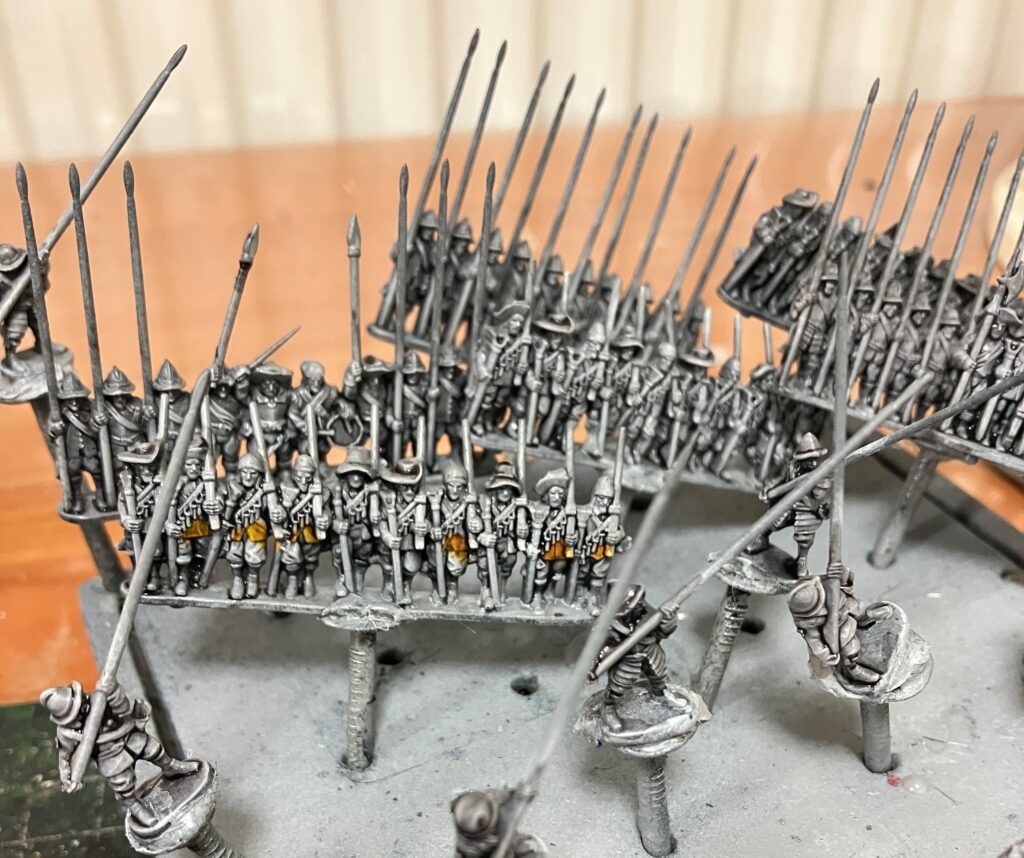
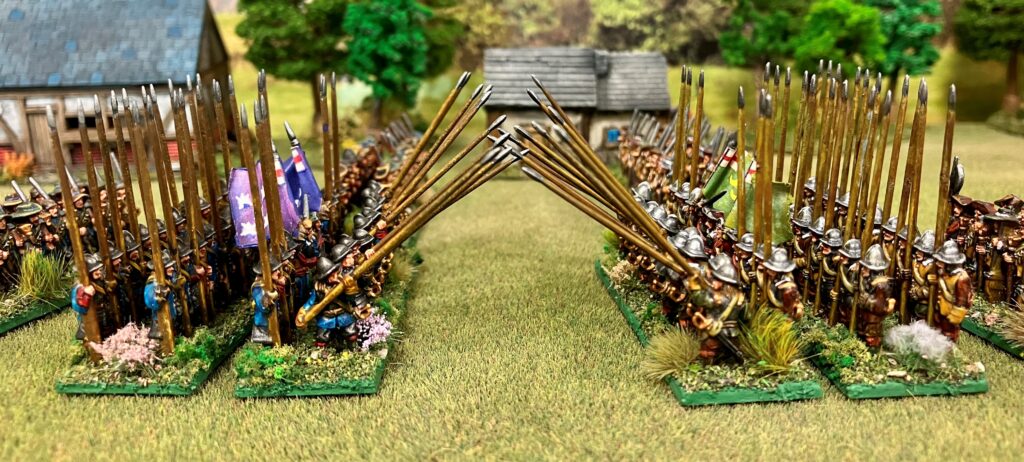
For basing I didn’t try to be clever and just mounted them as Warlord Games has demonstrated. For the front rank, you could get away with eight individual pikemen, especially if you are using ensigns or commanded shotte to add a command to the front rank and have enough left over for extra stands over a number of sprues.
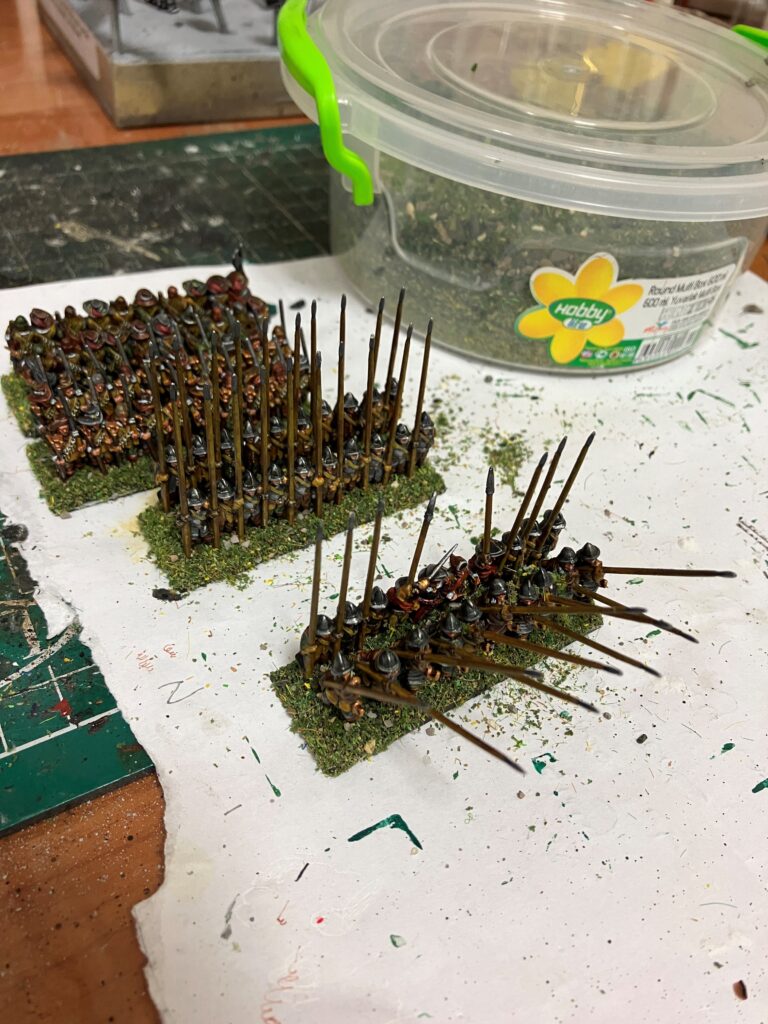
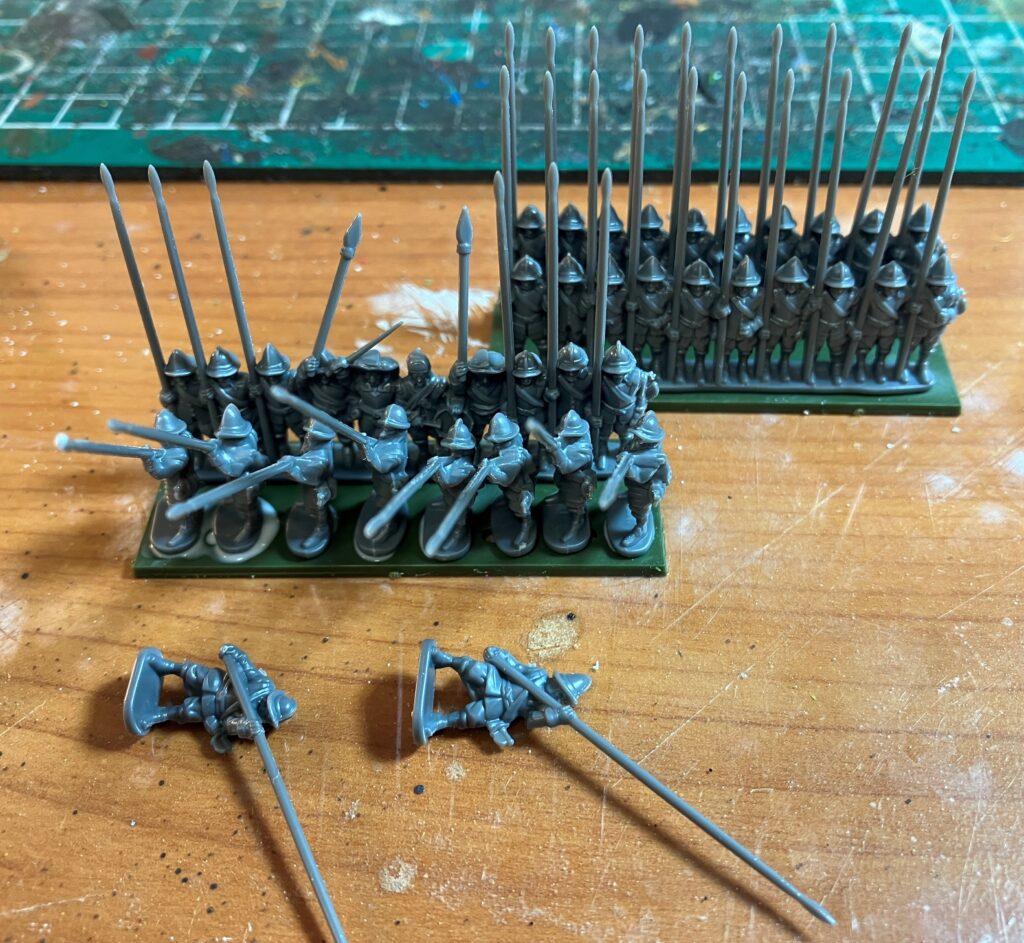
Beyond the act of painting itself, we have to talk about what colours to paint of course. WG has a very good article on their community site archive from their 28mm range, which should be a good starting point for most. Fortunately for anyone new, the key takeaway for this period is outside of a specific mention for a specific battle, most states of dress are either changeable, unknown, or inconclusive. This is either a period novice’s dream or an OCD nightmare! You can paint any logical colour scheme, and no-one can argue with you (well, not much). The box artwork, starter-set guides and Epic Battles-specific rules will be enough for you to have a fairly accurate representation to draw inspiration from. Beyond this, research Osprey Publishing’s wide range of publications on the period which are the next step on from a beginner’s guide. If you do want to lose yourself in the conjecture and get as close as you can to true representation, I recommend the following: The BCW Project by David Plant and the Keep Your Powder Dry blog (the author of which is also prominent in some FB Epic groups).
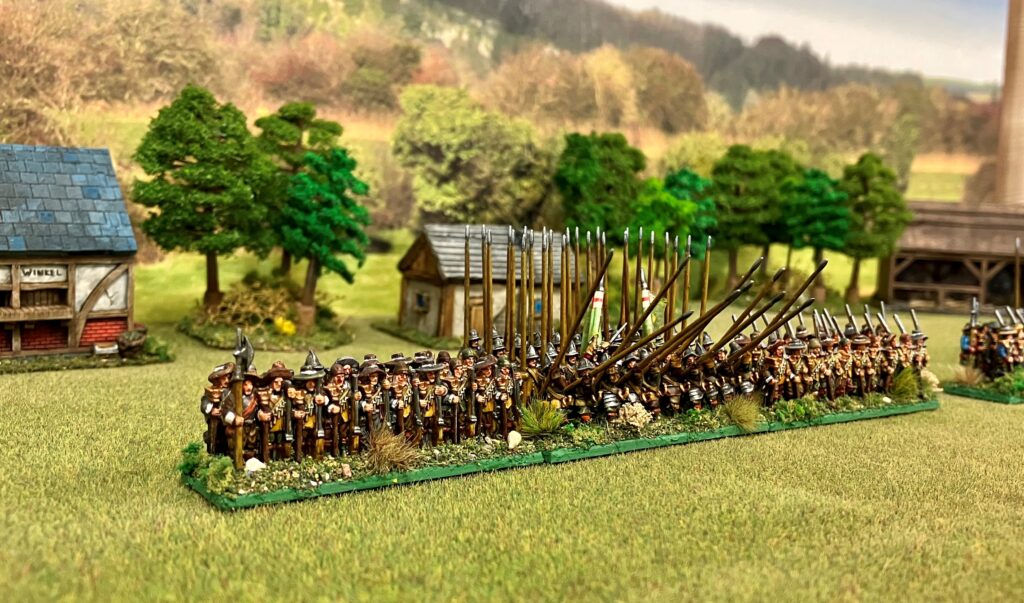
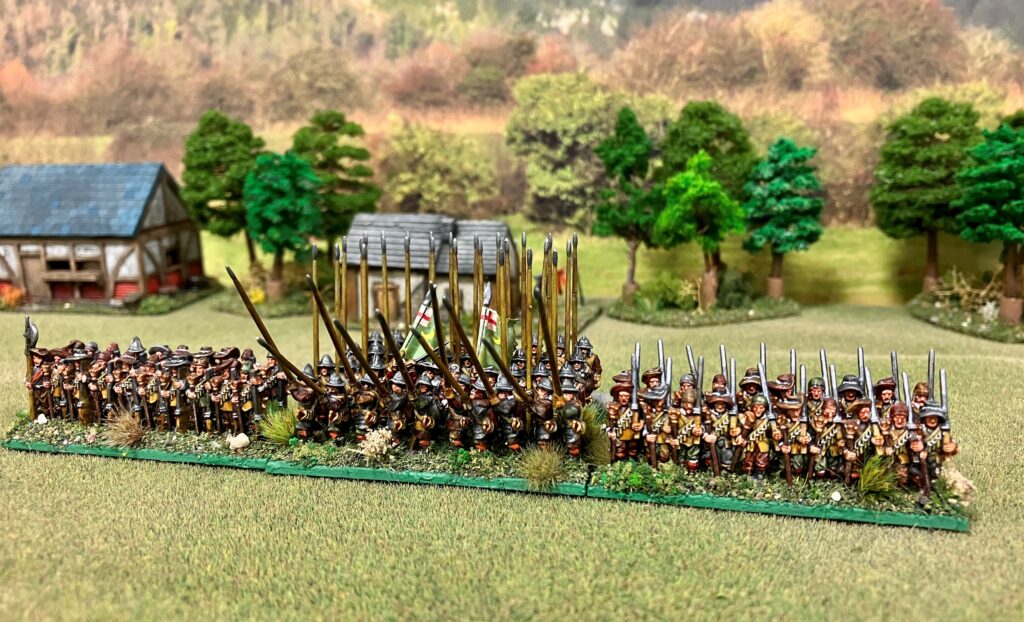
Don’t forget the Epic Battles Facebook community which includes discussions on Pike & Shotte Epic Battles, across multiple groups, and you’ll find useful content on YouTube from regular Epic influencers like Miniature Realm’s Stu Mack (in fact, here’s his recent pike infantry painting guide -ed.).
I cannot wait to get hold of the cavalry sprue, which has a lot more variation of units, and of course the Push of Pike battle-set, so I can begin properly in combining and experimenting with multiples of the infantry and cavalry sprues to really make my new army my own!
Get Started with Pike & Shotte Epic Battles – Launching in April!
Pike & Shotte Epic Battles: Push of Pike provides you with all the information you need to refight the wars that raged across Europe in the seventeenth century on an epic scale, with period-specific additions that capture the tactics, conditions, and prominent personalities of both the Thirty Years’ War and English Civil Wars.
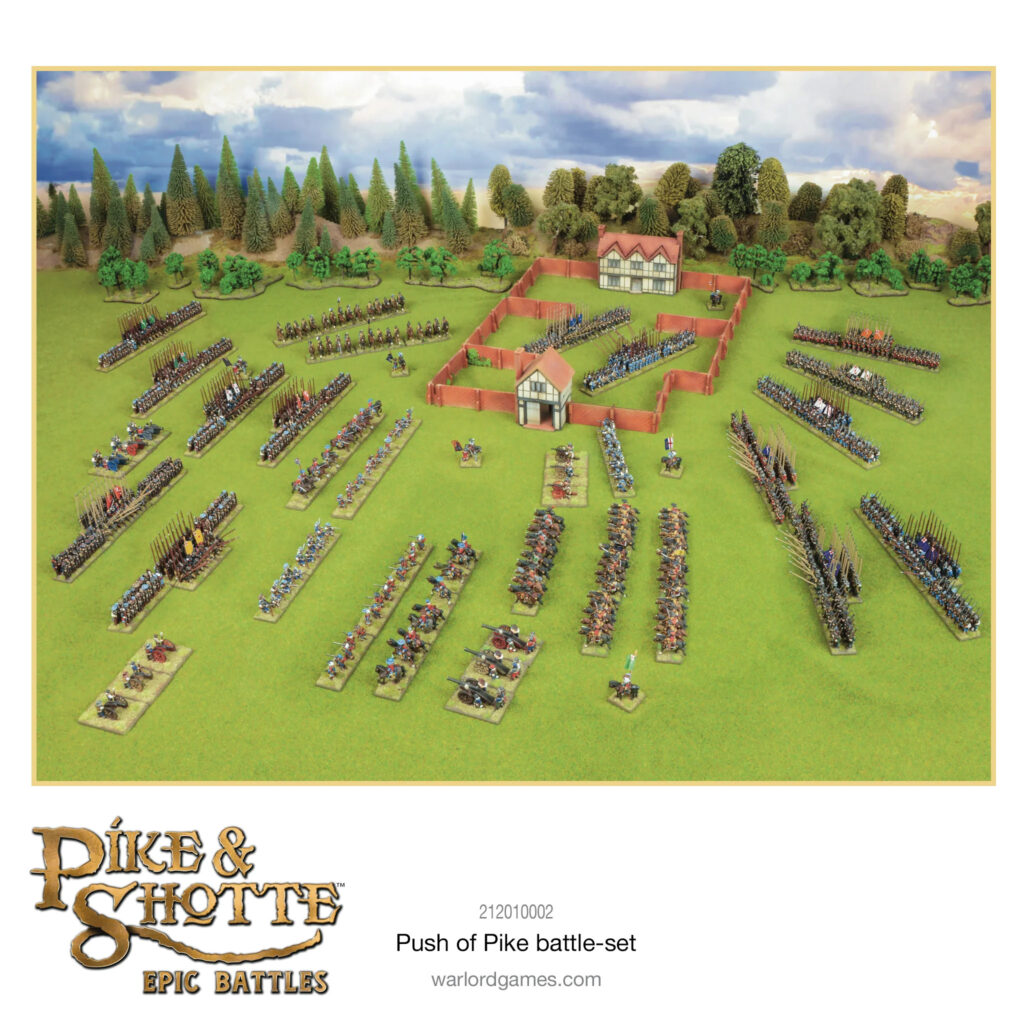
Pike & Shotte Epic Battles – Push of Pike battle set contains:
- Tan and grey hard plastic figures: 6 mounted battalia commanders, 6 ensigns, 6 mounted cornets, 14 combined pike & shot regiments (80 soldiers each), 36 commanded shotte, 60 cavalry, 12 cuirassiers, 18 mounted dragoons, 30 dismounted dragoons, 6 Saker cannon and 6 Falconet light guns
- Green plastic bases for all figures
- A5 260-page Pike & Shotte Epic Battles rulebook
- Quick Play reference card
- Assembly & painting guide leaflet
- Flag sheets for both the English Civil Wars and the Thirty Years’ War
- Laser-cut MDF fortified manor house complex
- Six D6 dice
